
Lyon & Healy Harps, Inc. is an American musical instrument manufacturer based in Chicago, Illinois and is a subsidiary of Salvi Harps. Today best known for concert harps, the company's Chicago headquarters and manufacturing facility contains a showroom and concert hall. George W. Lyon and Patrick J. Healy began the company in 1864 as a sheet music shop. By the end of the 19th century, they manufactured a wide range of musical instruments—including not only harps, but pianos, guitars, mandolins, banjos, ukuleles and various brass and other percussion instruments.
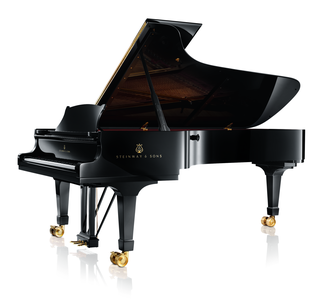
Steinway & Sons, also known as Steinway, is a German-American piano company, founded in 1853 in Manhattan by German piano builder Heinrich Engelhard Steinweg. The company's growth led to the opening of a factory in New York City, United States, and later a factory in Hamburg, Germany. The factory in the Queens borough of New York City supplies the Americas, and the factory in Hamburg supplies the rest of the world.
Piano construction is by now a rather conservative area; most of the technological advances were made by about 1900, and indeed it is possible that some contemporary piano buyers might actually be suspicious of pianos that are made differently from the older kind. Yet piano manufacturers, especially the smaller ones, are still experimenting with ways to build better pianos.
HDC YoungChang is a South Korean manufacturer of pianos and industrial wood working machinery, headquartered in Incheon, South Korea. Young Chang currently holds 50% of the South Korean piano market. The company is among the largest and most automated of the world's piano manufacturers.
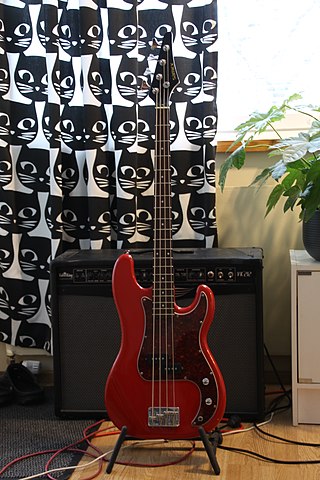
Samick Musical Instruments Co., Ltd. is a South Korean musical instrument manufacturer. Founded in 1958 as Samick Pianos, it is now one of the world's largest musical instrument manufacturers and an owner of shares in several musical instrument manufacturing companies.

Mason & Hamlin is a piano manufacturer based in Haverhill, Massachusetts. Founded in 1854, they also manufactured a large number of pump organs during the 19th century.
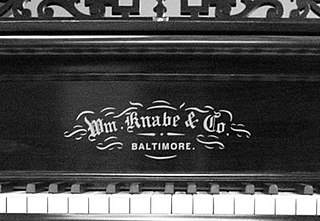
Wm. Knabe & Co. was a piano manufacturing company in Baltimore, Maryland, from the middle of the nineteenth century through the beginning of the 20th century, and continued as a division of Aeolian-American at East Rochester, New York, until 1982. The name is currently used for a line of pianos manufactured by Samick Musical Instruments.
Joseph J. Pramberger (1938–2003) was a piano engineer/designer and the founder of the Pramberger Piano Company.
Lindeman was a name used by a series of piano manufacturers in New York in the nineteenth and twentieth centuries. The concern was founded by William Lindeman (1794–1875) on a small scale in Dresden in about 1822, and reestablished by him in New York City in 1835 or 1836, where it grew to a medium size within twenty years. American piano historian Daniel Spillane credited him as one of the first successful immigrant German piano makers in the United States.

American Piano Company (Ampico) was an American piano manufacturer formed in 1908 through the merger of Wm. Knabe & Co., Chickering & Sons, Marshall & Wendell, and Foster-Armstrong. They later purchased the Mason & Hamlin piano company as their flagship piano. The merger created one of the largest American piano manufacturers. In 1932, it was merged with the Aeolian Company to form Aeolian-American Co.
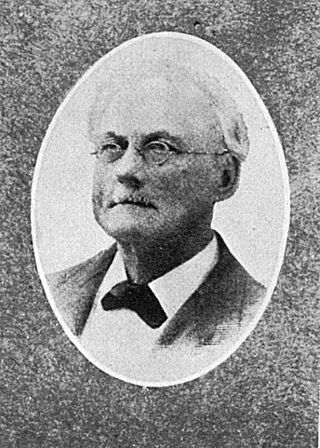
Frederick Mathushek was a piano maker who worked in Worms, Germany, and in New York City and New Haven, Connecticut, during the second half of the nineteenth century. His name was used by several different piano manufacturers through the 1950s, and was filed independently as a trademark for musical instruments in 2005 and 2008.

The Aeolian Company was a musical-instrument making firm whose products included player organs, pianos, sheet music, records and phonographs. Founded in 1887, it was at one point the world's largest such firm. During the mid 20th century, it surpassed Kimball to become the largest supplier of pianos in the United States, having contracts with Steinway & Sons due to its Duo-Art system of player pianos. It went out of business in 1985.

Steck was a brand of pianos manufactured from 1857 to 1985. They were initially made by George Steck & Company before combining with the Aeolian Company in 1904. The Aeolian Company went bankrupt in 1985. The Steck piano brand was then sold to Sohmer & Co., and then to America Sejung Corporation, which dissolved in 2013.
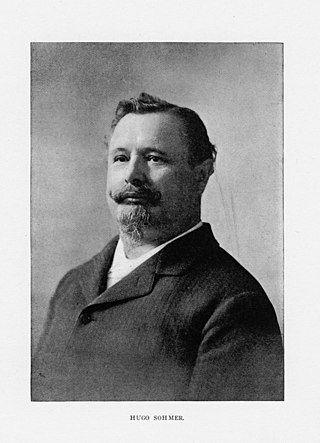
Hugo Sohmer was an American piano builder and manufacturer of German descent.

Grotrian-Steinweg, known as Grotrian in the US, is a German manufacturer of prestige pianos. The company is based in Braunschweig, Germany, commonly known as Brunswick in English. Grotrian-Steinweg makes premium grand pianos and upright pianos.
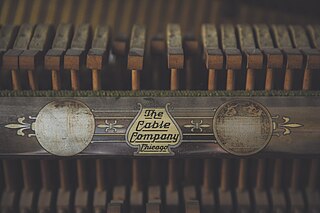
The Cable Company was an American manufacturer and distributor of pianos and reed organs that operated independently from 1880 to 1936.
The Weber Piano Company is a former piano manufacturing company based in New York City and East Rochester, New York from the middle of the 19th century through the beginning of the 20th century, and continued as a division of Aeolian-American at East Rochester, New York until 1985, when Aeolian went out of business.

Sohmer and Company Piano Factory is a historic piano factory located in the Astoria neighborhood of Queens, New York City. It was built in 1886 by Sohmer & Co., and is a six-story, L-shaped, Rundbogenstil / Romanesque Revival style brick building. The corner features a clock tower with a copper trimmed mansard roof. The building was expanded about 1906–1907. It was converted to residential usage starting in 2007.
















